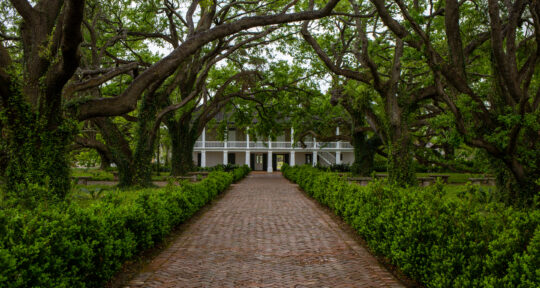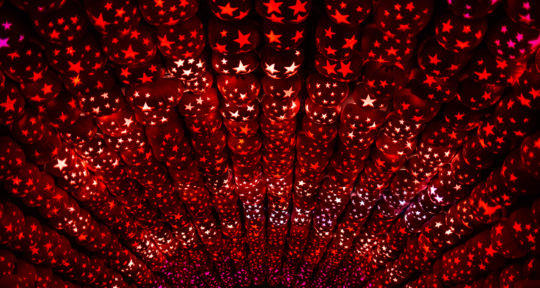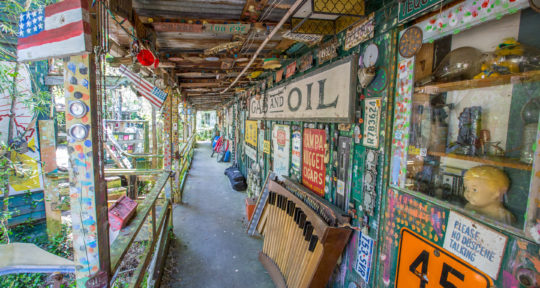They call this place Prairie des Femmes, Louisiana French for “prairie of the women.” The language is spoken heavily in Acadiana, a region in Southern Louisiana settled by people who fled Nova Scotia in the 18th century.
I take in the scenery from behind a rain-splattered window after making my way out of Lafayette, the region’s largest city, and into one of the many rural communities near Arnaudville about two hours west of New Orleans. The name of this prairie has been used since the 1700s, when the men went off to war and women were left to support their families on their own.
The van crawls to a stop on a dirt road lined with old oak trees, and I park next to a tricked-out truck painted in colorful designs and pulling a similarly-styled trailer. I’ve scored an invite to observe a private Courir de Mardi Gras event, a Cajun Country pre-Lent festivity that translates to “Mardi Gras run.”

As I round the corner into a gravel driveway, the overcast day is interrupted with bursts of the season’s traditionally bright attire alongside tattered-looking clothing, conical hats, and masks.
I feel as if I’ve stepped into a secret meeting; I’m wearing bright yellow pants and a purple shirt, but I quickly learn that Mardi Gras in Cajun Country is a wholly different experience than that of New Orleans and even of nearby Lafayette. There are no beads in sight, no intricate floats, and no frozen daiquiris.
Chasing the chicken
This Cajun carnival, which has its roots in French medieval society, crossed the pond to Louisiana in the 19th century. Signaling a rite of passage for those entering into adulthood, the festivities fell into obscurity in some places during World War II, until an interest in Acadian heritage was renewed in the 1970s.
The Courir de Mardi Gras involves going door to door and begging for ingredients for gumbo, including rice and sausage. Not everyone answers the door. Other families are asked in advance to participate to avoid trespassing. The “runners,” or the Mardi Gras, also chase a live chicken, often traversing creeks and climbing trees to reach it. Once all items are assembled, there is a big celebration with the communal stew.
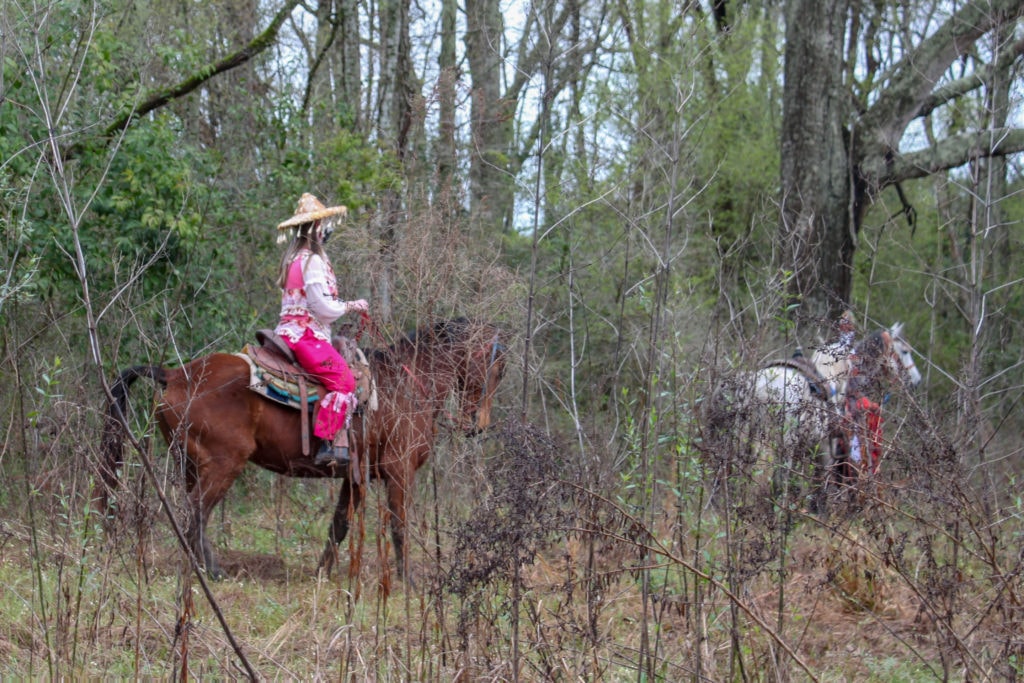
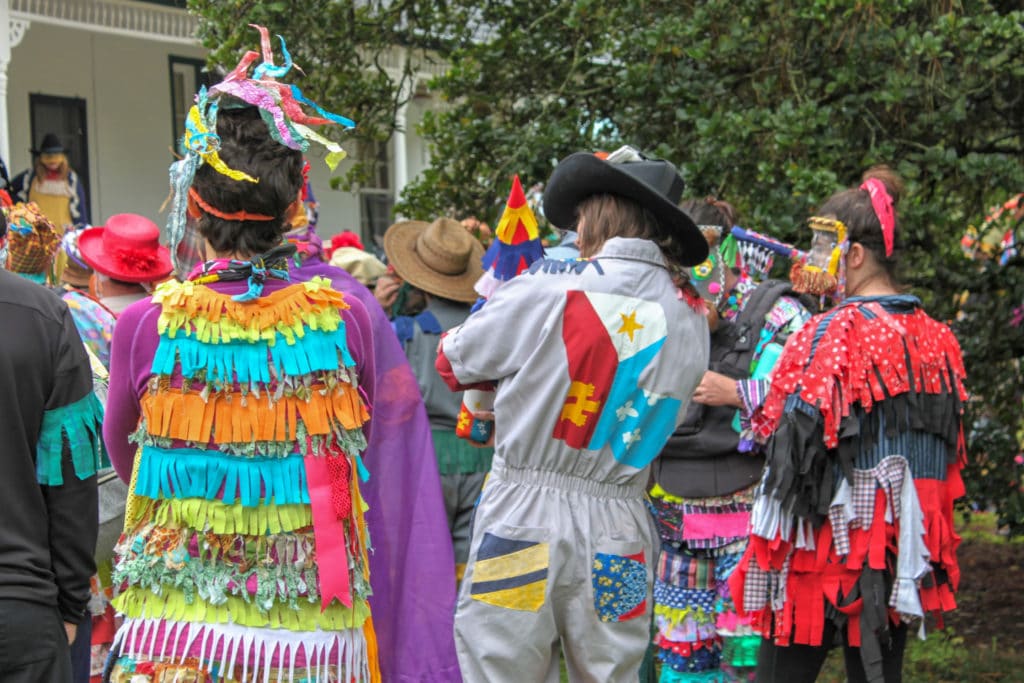
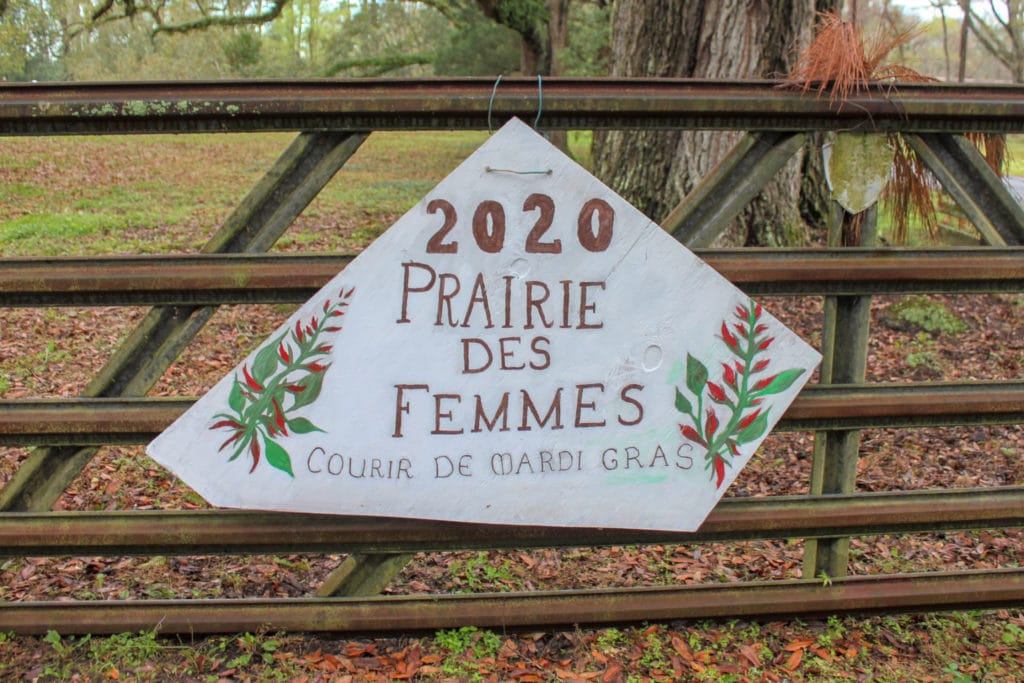
There are a number of roles assigned during this event, most importantly the capitaine. They are responsible for keeping the sometimes inebriated runners under control, often with the use of a whip. They also explain the rules to first-timers. On this rainy morning, two female capitaines ride four-wheelers instead of horses, donning capes and tall black boots like musketeers. Along the way, they dance and sing “La Chanson de Mardi Gras,” led by a Cajun band.
Each celebration dictates the requirements of the runners, but masks are always a necessity. The masks—decorated to resemble faces with exaggerated features—are important for anonymity, so that runners can be free to behave how they like.
Each runner also dons a hat, called a capuchon, which resembles a playful dunce’s cap. Their clothing often has fringe or cut-up strips of fabric. Originally assembled to mock the aristocracy, the outfits can be handmade, purchased from locals, or passed down from family members. Some feature cartoon characters, sports teams, or the flag of Acadiana.
Some revelers dress as members of the clergy wearing a bishop’s mitre or as scholars donning mortar boards. Others take a non-traditional approach with cowboy hats, beaded fringe, and hip neon colors to express their personalities. Gender fluid attire is common; men wear dresses and women’s masks incorporate beards and mustaches.
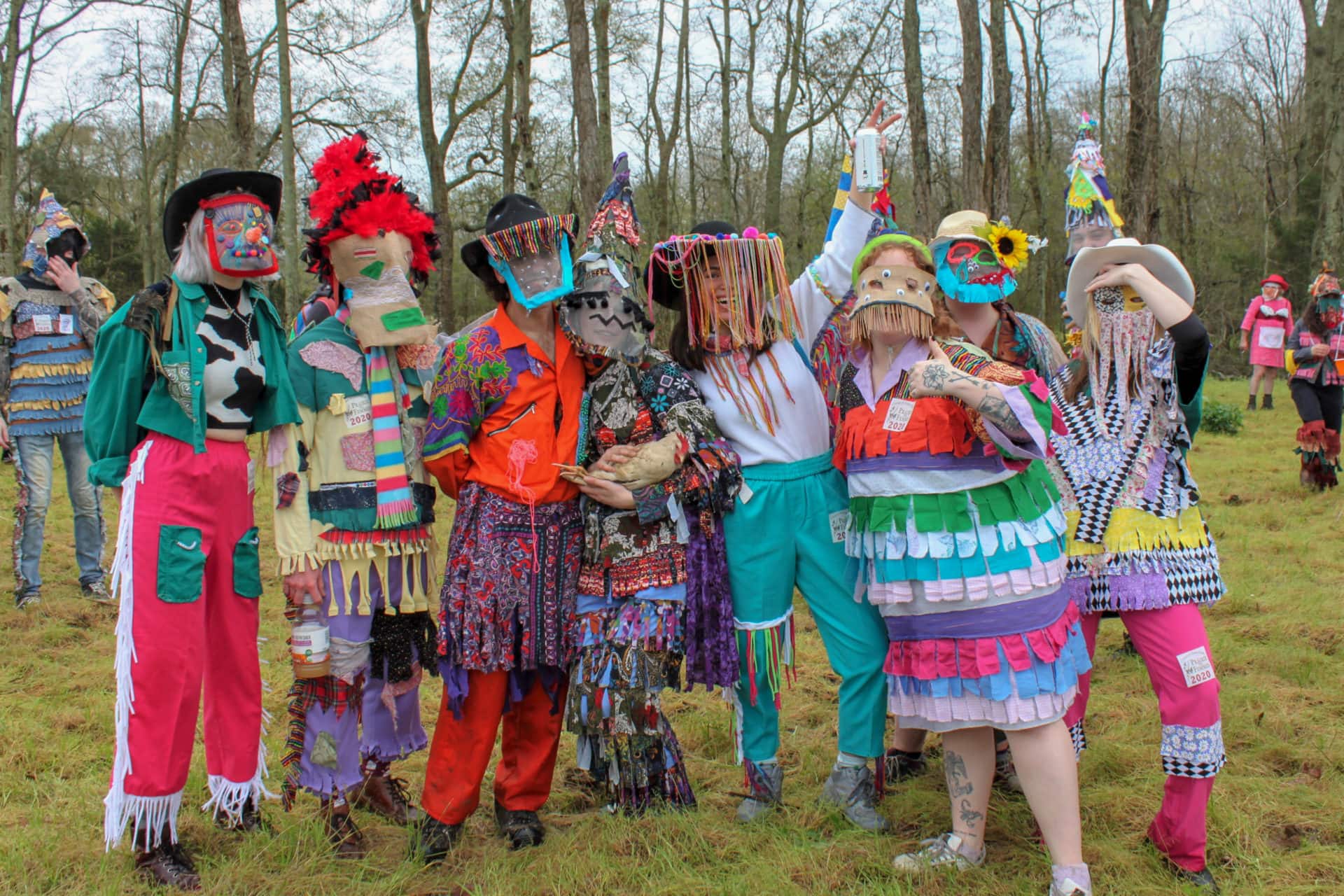
Merriment and mischief
Until the 1960s, women were involved in the courir in a smaller capacity, namely creating the costumes, but they are also credited with bringing back the tradition. In the neighboring town of Basile, women’s runs were created as a compromise, held the Saturday before Mardi Gras. The Courir de Mardi Gras I’m attending was started in 2019 and is run entirely by women, one of the first of its kind. Attendees span all ages and genders, but there is no doubt who’s in charge.
The merry band, perched on a platform pulled by a truck, slowly continues down the dusty road away from the starting point, following the capitaine’s four-wheeler. Some residents come out of their homes to see the parade. Runners carry essentials, including plastic bottles of whiskey discreetly tucked into pockets. A port-a-potty is also hitched to a trailer for the runners to use.
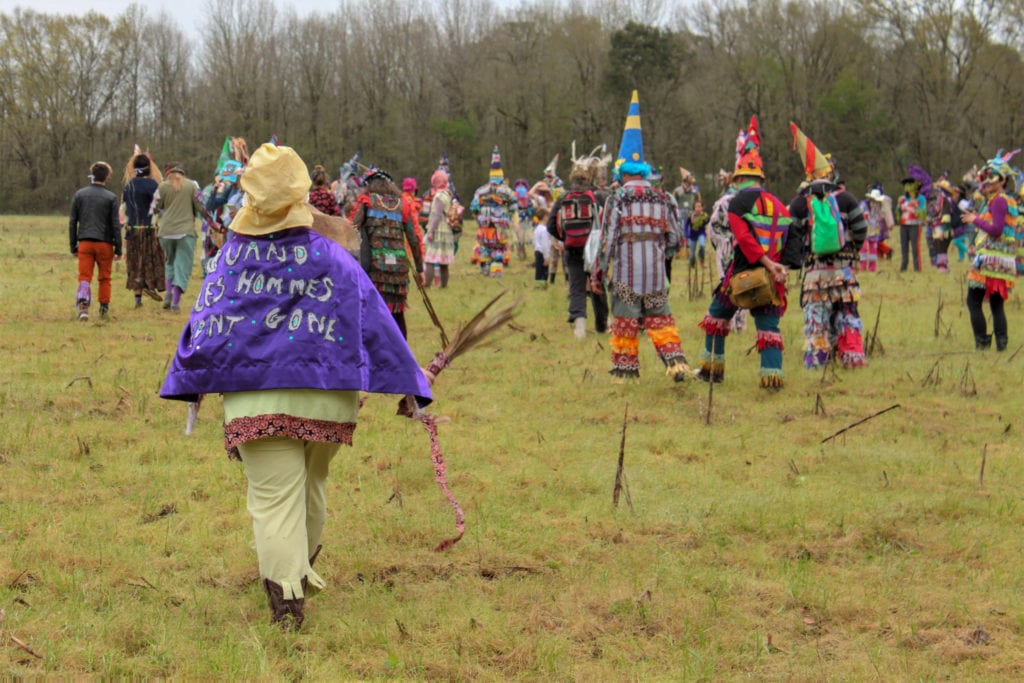
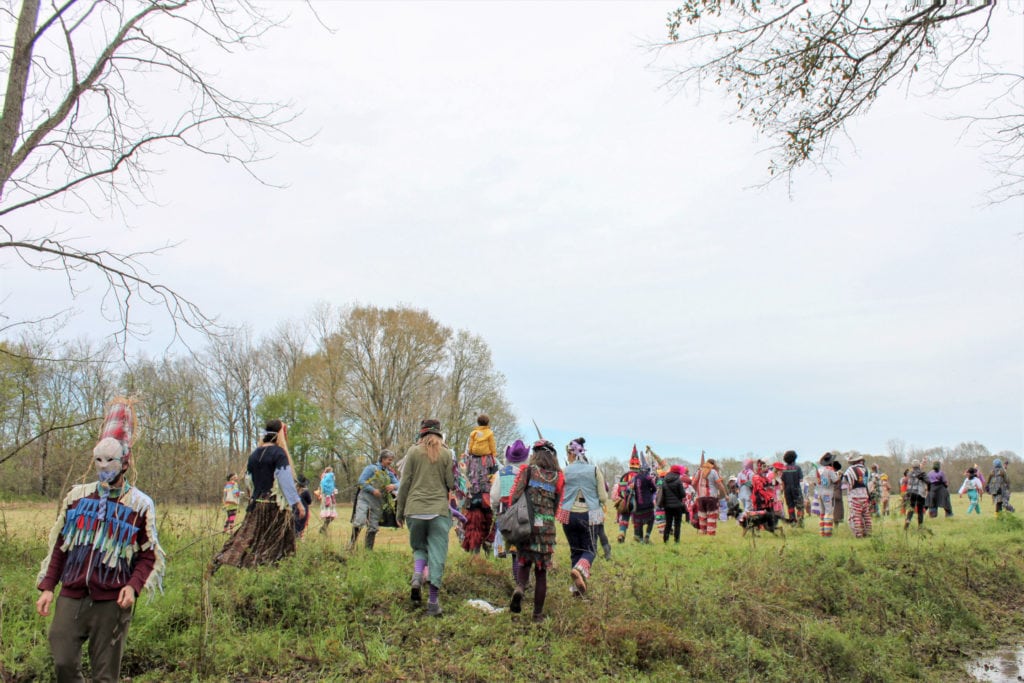
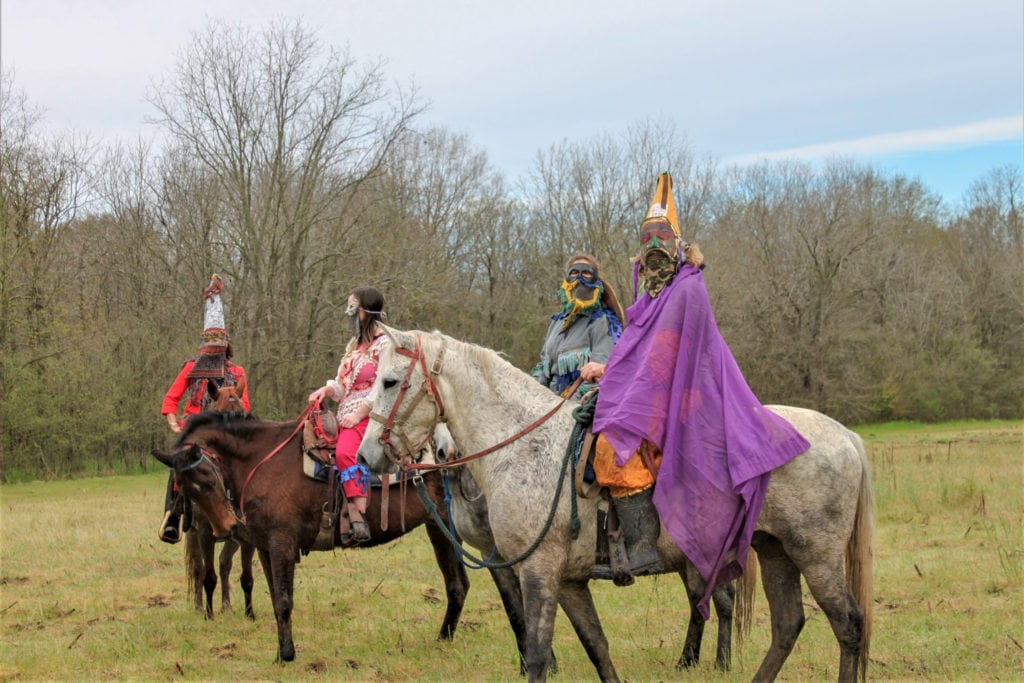
I’m one of the few outsiders here. Most of the revelers ignore us entirely, focusing on their own merriment, and stopping only to pose for photos with their captured chicken. Some pick wildflowers to leave on the doorsteps of houses. A young boy targets me with his mischief, throwing mud on my shoes and tossing leaves in my hair.
After a few hours, I take my leave and let the runners enjoy the fruits of their begging. My pants are caked in mud as we make my way back to Lafayette. I can’t help but feel as if I’m returning from Wonderland, back on the other side of the looking glass after a fleeting glimpse into the colorful—and sometimes confusing—traditions of Cajun Country.
If you go
Some runs are open to outsiders, but many are not. This year, the Eunice courir is still happening but in decreased numbers. Masks were always a part of the celebration but are now also important for safety.

